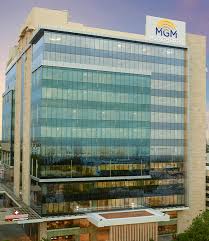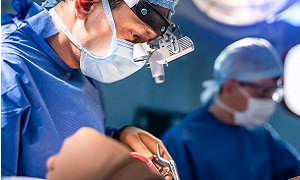Best Doctors in India for Pectus Excavatum Treatment
Best Hospitals in India for Pectus Excavatum Treatment
Lilavati Hospital & Research Centre, Mumbai
- City: Mumbai, India
Hospital Highlights:
- Lilavati Hospital & Research Centre is India’s premier multi-speciality tertiary care hospital and has been recognised as a global medical excellence centre.
- Lilavati Hospital & Research Centre has built an unrivalled level of trust with its patients over the years, thanks to a solid foundation that comprises cutting-edge facilities, the best medical competence, research, education, and charity endeavours.
- The hospital is quite proud of the fact that it now serves patients from all kinds of backgrounds, not just from the United States but from all around the world.
- The hospital has a total of 323 beds, one of the largest Intensive Care Units (ICUs), 12 Operation Theatres with modern amenities, over 300 consultants, and almost 1,800 personnel.
Venkateshwar Hospital, Dwarka, New Delhi
- City: New Delhi, India
Hospital Highlights:
- State-of-the-art technology and devoted healthcare professionals have been brought together under one roof at Venkateshwar Hospital to provide genuine medical care. The hospital’s professionals work together as a team to deliver the best possible treatment to their patients, using the most sophisticated equipment and information technology.
- Venkateshwar Hospital’s mission is to attain global excellence in healthcare by employing evidence-based, ethical clinical practices and cutting-edge technology by a team of highly skilled experts.
Marengo Asia Hospital, Faridabad
- City: Faridabad
Hospital Highlights:
In the sprawling city of Faridabad, where healthcare needs are diverse and ever-evolving, one institution has consistently stood out as a beacon of excellence in the field of medicine—Marengo Asia Hospital. Established with a vision to provide world-class healthcare services to the community it serves, Marengo Asia Hospital has emerged as a trusted name synonymous with quality, compassion, and innovation in healthcare.
MGM Healthcare, Chennai
- City: Chennai, India
Hospital Highlights:
- Located in Chennai, India, MGM Healthcare is a top multispecialty hospital that provides all medical services under one roof.
- Since its founding in 2019, MGM Healthcare has quickly become a leading national referral centre, creating several innovative flagship initiatives.
- MGM Healthcare combines next-generation medical and digital technologies to provide better patient results.
- With 12 centres of excellence, more than 400 inpatient beds, 100 intensive care unit beds, and 24/7 emergency care, MGM Healthcare leaves no chance in redefining the patient experience in Chennai.
- MGM Healthcare boasts 250+ expert doctors across 30+ departments, including Cardiology, Pulmonology, Neurology, Obstetrics & Gynaecology, and more.
- They house 12 specialized Centres of Excellence, including Neurosciences, Orthopaedics, and Multi-Organ Transplantation.
- Their team of doctors, nurses, and paramedics works together to give every patient individualized treatment.
Pectus Excavatum
Pectus Excavatum, which is also termed as sunken or funnel chest, is a congenital chest wall deformity, in which there is an abnormal growth of some of the ribs and the sternum. This leads to a concave, or caved-in, appearance in your anterior chest wall. The condition occurs both in children, as well as adults, though it is mostly seen in the early teen years.
Symptoms
Due to this condition, patients may have less space in their chest, and this can lead to their heart and lung function getting limited. The symptoms may be physical or psychological. The physical symptoms generally include the following:
- Shortness of breath during exercise
- Fatigue
- Chest pain
- Decreased stamina
- Irregular heartbeat
Aside from this, the condition can also lead to a few psychological conditions such as:
- Embarrassment due to the appearance of the chest
- Depression
- Self-esteem issues
If you or your child, shows any of the symptoms, you might want to consider seeing a healthcare professional.
Causes
What exactly causes pectus excavatum is unknown. However, there are few medical problems which are associated with this condition, some of them including:
- Marfan Syndrome – A connective tissue disease
- Noonan Syndrome – This disorder can cause abnormal development of several parts of the body
- Poland Syndrome – A disorder that causes the muscles to develop slowly or not develop at all
- Scoliosis, a condition which causes abnormal curving of the spine
- Rickets, a softening and weakening of the bones
Diagnosis
Treatment
Pectus excavatum is treatable surgically. Surgery is generally advised if the condition causes other health problems, such as difficulty in breathing. It can also be done to improve the appearance of the chest. Discuss treatment options with your provider.
The Nuss procedure
This method involves a small camera being inserted into the chest, to guide the procedure. Then two small incisions are made on either side of the chest, after which a curved steel bar is inserted under the sternum. Individually curved for a patient, this bar helps to correct the depression and is secured to the chest wall on both sides. For three years, the bar is left in this place and position, and it is removed later as an outpatient procedure.
The Ravitch procedure
This procedure, which is also known as ‘traditional’ or open surgical repair, of pectus excavatum, involves an incision on the front of the chest with the removal of the cartilaginous part of the ribs, as they have overgrown, and caused the sternum to be pushed in a backward direction. Thus, the sternum can be pulled forward, away from the heart and lungs, and into the normal plane of the wall of the chest. Often, a small plate with tiny screws might be used to help stabilize the sternum in the new position. A small metal bar might also be placed behind the sternum for six to twelve months. It can be removed later during a short outpatient procedure. This bar is smaller than the one which is used in the Nuss procedure.






